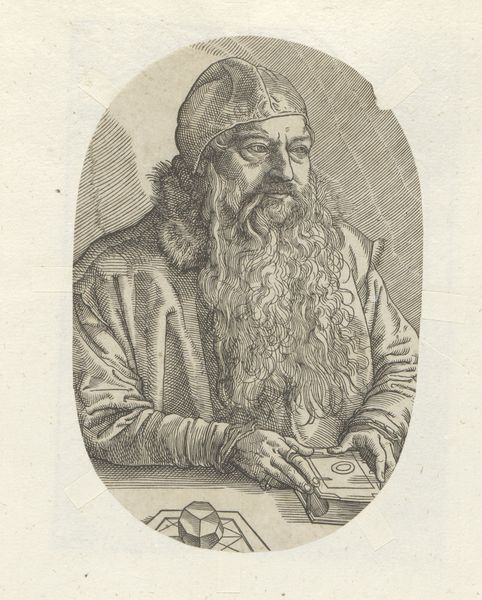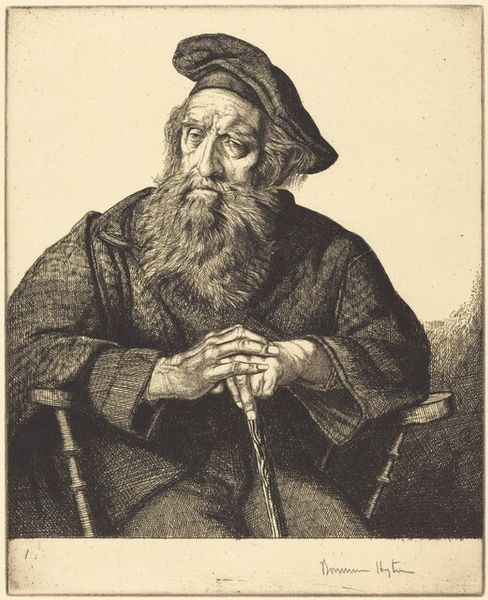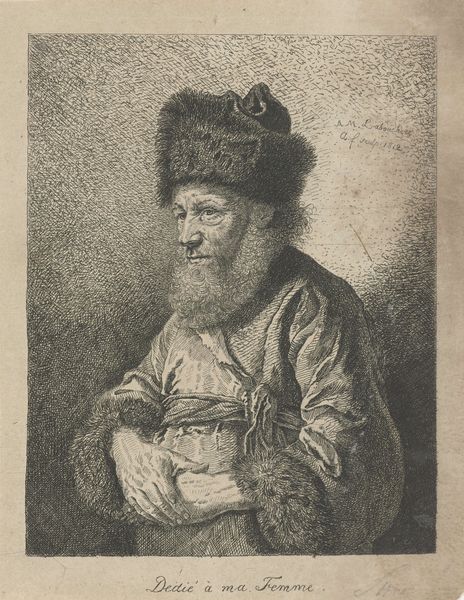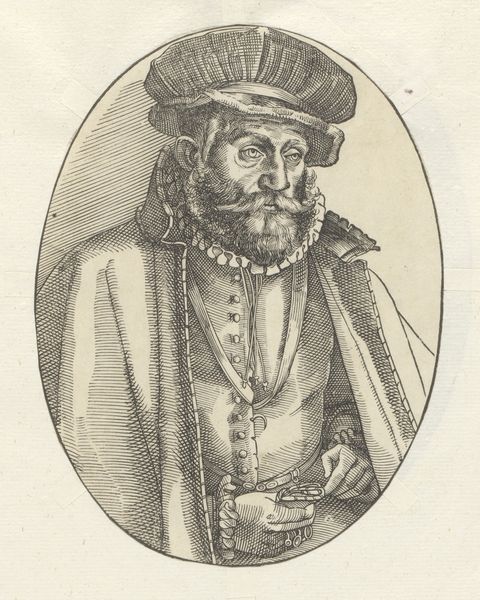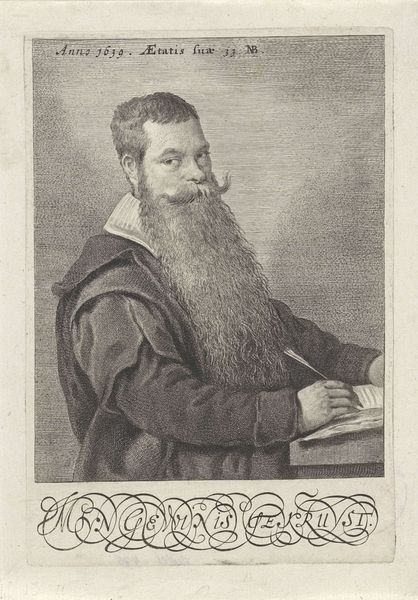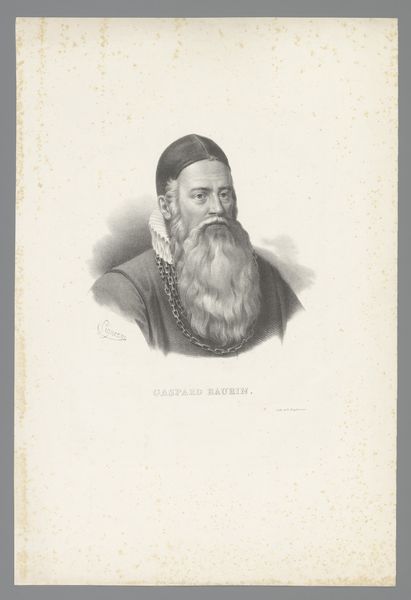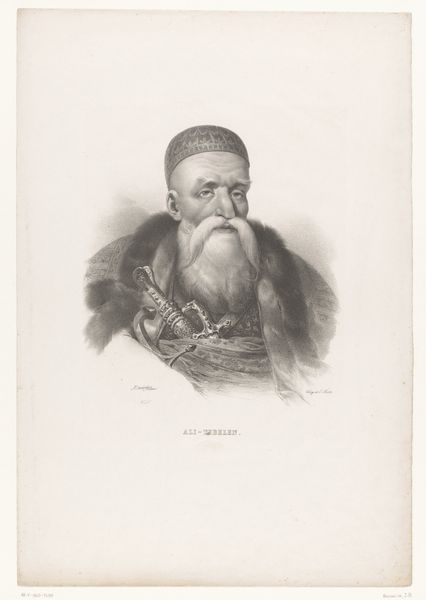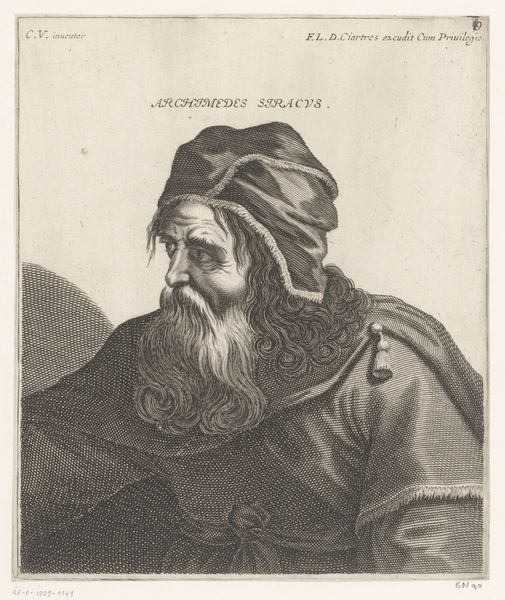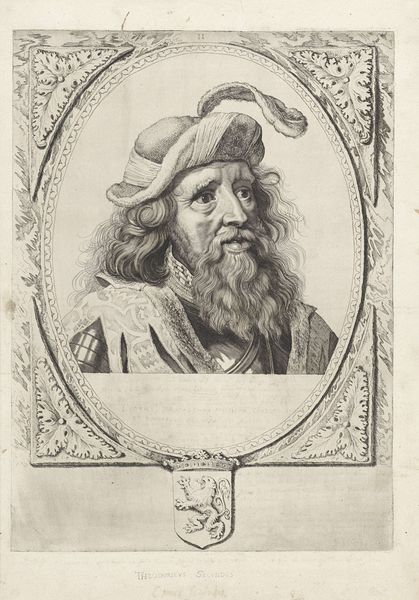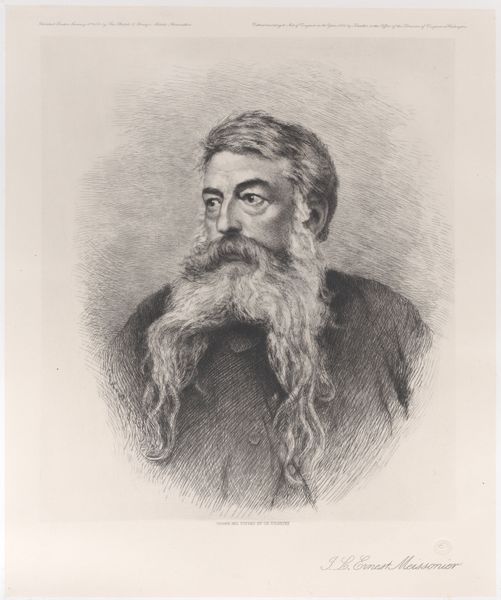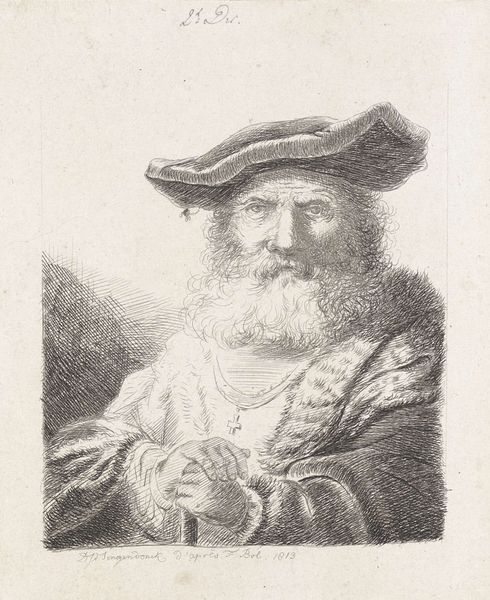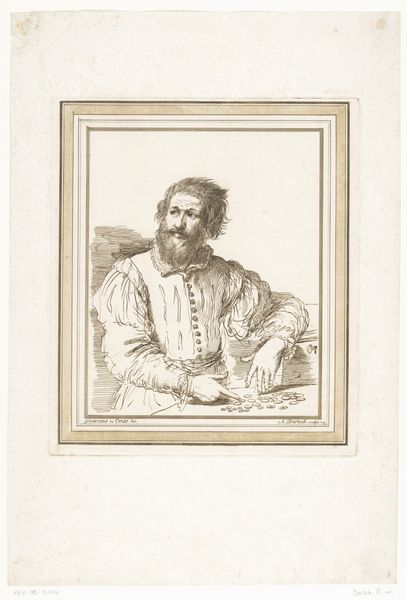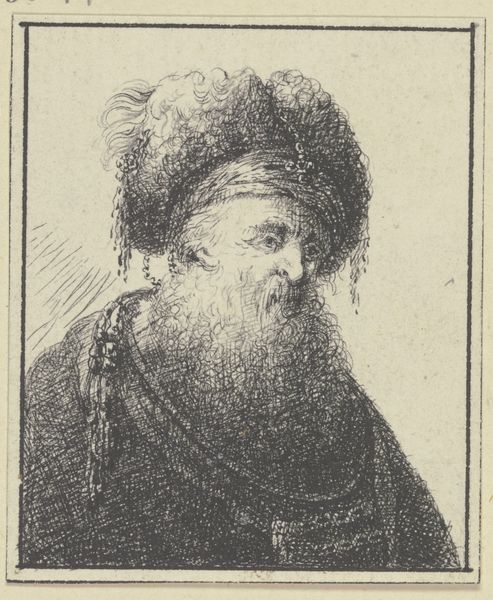
engraving
#
portrait
#
caricature
#
portrait drawing
#
history-painting
#
engraving
#
realism
Dimensions: height 145 mm, width 107 mm
Copyright: Rijks Museum: Open Domain
Elchanon Verveer made this print, "Man met een muts", using etching techniques. This method involves covering a metal plate with a waxy, protective layer, and then scratching an image into it with a needle. The plate is then submerged in acid, which bites into the exposed lines, creating grooves. After removing the wax, the plate is inked, and the surface wiped clean, leaving ink only in the etched lines. Finally, it's pressed onto paper, transferring the image. The success of an etching relies on the etcher’s skill in manipulating line, a meticulous process that demands patience and precision. Verveer uses hatching and cross-hatching to build up tone and shadow, giving depth to the figure’s face and clothing. The final print has a distinct visual quality, with its fine, crisp lines and subtle tonal variations. Understanding the process by which Verveer made this print helps us appreciate not just the image, but the labor and skill involved in its creation. In this way, the print exists not only as an image, but as a record of human ingenuity.
Comments
No comments
Be the first to comment and join the conversation on the ultimate creative platform.
